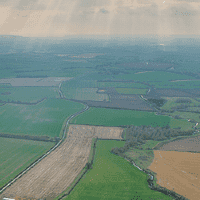Just over 180,000 acres of farmland were publicly marketed across Great Britain during 2016. This, despite the uncertainty prior to Brexit, was very similar to the area advertised in 2015.
Over the full year we recorded a similar pattern across England (121,500 acres) and Scotland (44,500 acres), Wales (14,400 acres) being the exception, where supply increased almost 20% but off a smaller historic total area.
However, there were differences in activity throughout the year and between countries as illustrated in Figure 3 below.
Historic trends suggest that uncertainty creates a lull in market activity and 2016’s market dynamics showed some interesting trends.
At the end of the first half of 2016:
- In England, activity tempered by uncertainty and down -6%
- In Scotland, the opposite, a degree of referendum fatigue may have helped increase activity (+8%)
- Wales showed a similar pattern to Scotland, where activity (albeit from a smaller base where a few farms can distort either way) was up 35%.
But in the second half of the year:
- In England, activity took off and resulted in an 18% increase on the same period of 2015
- In Scotland, conversely, the flurry of activity in the first half of the year ceased and second half activity fell -18%
- Wales showed a similar pattern to Scotland, where activity fell -7%.
Total 2016 activity across the English regions generally followed the national pattern, with variations on the previous year limited to plus or minus 10% – a pattern not often recorded.
Our analysis of farm transactions across GB, where Savills acted for the buyer or seller, continues to show the range of motives amongst buyer and seller remains diverse.
.jpg)
.png)
.png)


.png)